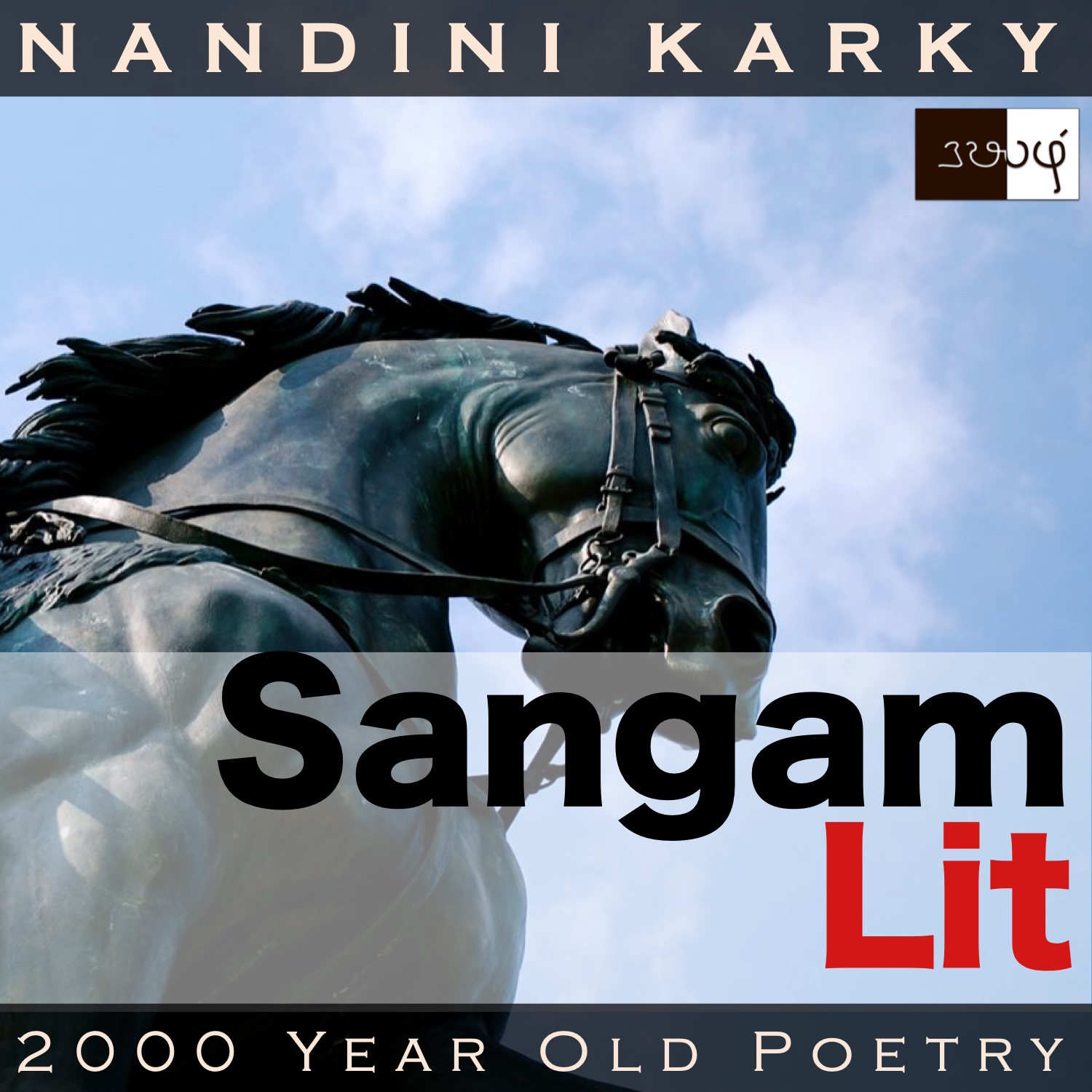Podcast: Play in new window | Download
Subscribe: Apple Podcasts | Spotify | Amazon Music | Android | iHeartRadio | TuneIn | RSS | More

In this episode, we relish references to intriguing objects used in ancient times, as depicted in Sangam Literary work, Kurunthogai 155, penned by Urodakathu Kantharathanaar. Set in the forest regions of ‘Mullai’, the verse speaks in the voice of the lady to her confidante, conveying her angst at not hearing news of the man’s return.
முதைப் புனம் கொன்ற ஆர்கலி உழவர்
விதைக் குறு வட்டி போதொடு பொதுளப்
பொழுதோ தான் வந்தன்றே; ”மெழுகு ஆன்று
ஊது உலைப் பெய்த பகுவாய்த் தெண் மணி
மரம் பயில் இறும்பின் ஆர்ப்ப, சுரன் இழிபு,
மாலை நனி விருந்து அயர்மார்
தேர் வரும்” என்னும் உரை வாராதே.
A verse that throws light on the changing outer world and unchanging inner world. The opening words ‘முதைப் புனம் கொன்ற ஆர்கலி உழவர்’ meaning ‘boisterous farmers who have tilled the ancient upland field’, depicts a single-line portrait of the nature of hardworking farmers, who live by the mountainous forest regions. An object beckons our attention in ‘விதைக் குறு வட்டி’ meaning ‘a small seed box’. The word ‘வட்டி’ used here in the meaning of ‘a box’ makes me wonder how it transformed into ‘பெட்டி’, which is the contemporary word for the same. Following this, the words ‘மெழுகு’ meaning ‘wax’, ‘ஊது உலை’ meaning ‘a forge’ and ‘தெண் மணி’ meaning ‘clear bells’ cast glimpses of the work in a bell foundry. More about this shortly. Ending with the words ‘தேர் வரும் என்னும் உரை வாராதே’ meaning ‘a news that the chariot is set to arrive comes not’, the verse intrigues our curiosity.
Seed boxes and clear bells resound with the sounds of the heart. The context reveals that the man and lady were leading a happy, married life when the man parted with the lady to go in search of wealth. One day much later, the lady turns to her confidante and says, “With the uproar of tilling on that ancient forest field, farmers are returning with their small seed boxes, brimming with flower buds. That time of the day is here. And yet, the words, ‘wide-mouthed bells, moulded on wax models in the furnaces of the smithy, are resounding amidst the forest, and leaving behind the drylands path, this evening, the chariot will arrive to partake the fine feast’, I seem not to hear!” With these words, the lady expresses her sorrow at the fact that the man has not returned in the promised season.
How do we determine the promised season from these descriptions of scenes around? Let’s follow the lady’s words closely to look for hidden clues. She starts by talking about the farmers, who work on those ancient upland fields, describing them as loud and full of energy. Even today, inspite of the technological advancements, a farmer needs loads of energy, and so, imagine how much more they would have needed, in the days of the past. They cannot do the work they do without enthusiasm and cheer. Returning to listen to the lady, we see her then pointing out to how these jolly farmers are returning home. To depict that, the lady chooses to zoom on to an object they had taken along with them to their work. This is a box to hold the seeds they are meant to sow in the field. Now, when we peer into the contents of the box, it contains not seeds, but flower buds. Probably, the farmer is taking these flowers for his wife or daughter! That transformation from seeds to flower buds indicates two things to the lady. One, it is evening time, when the farmer’s work is done, and two, it’s the rainy season, when the flowers have started smiling to the world around.
An evening, and that too, in the rainy season, we know from all our readings, is a painful time for separated lovers. And so, the lady turns with a sigh and tells us that she hears no words that talk of how those wide-mouthed bells, made in the smith’s furnace from wax models, are heard amidst the dense trees of the forest, or the news that the chariot is rushing homeward in the evening with its riders, eager to delight in the fine feast prepared by the lady. The lady seems to have been waiting for the sound of bells from the man’s chariot and hoping to prepare a feast for him, but no such delightful news has greeted her ears, she laments. Let’s wish that she hears those clear bells very soon and turn our attention to the making of those bells. The words ‘bell’ and ‘wax’ in this verse led me to learn of this ancient technique of ‘lost-wax casting’. On searching a little more, the earliest known object made from this technique is a 6,000-year-old amulet, a remnant of the Indus Valley Civilisation. Is this 2000 year-old verse telling us something about the bond between these two different civilisations, that graced this nation at different times in history? Perhaps, it’s only the time for questions now, but someday in the future, science will have answers that reveal the undeniable truths of the past, I hope.




Share your thoughts...